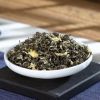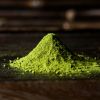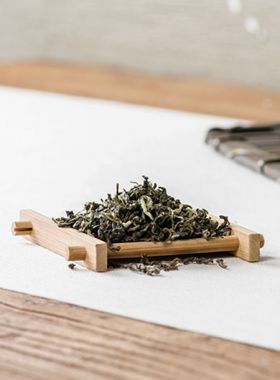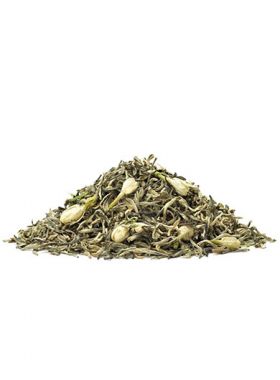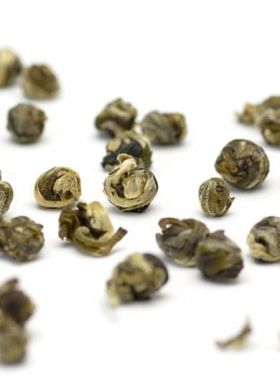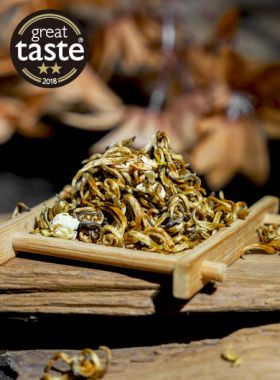-
Fast ShippingFree shipping for orders above $40
to most countries. -
Secure PaymentPay with Paypal, Credit Card …
-
Carefully SelectedFrequently Visit Tea Gardens.
Taste Repetitiously -
15 Days RefundNo Questions Asked
Refund Policy
Nu Er Huan (Daughter’s Ring) Jasmine Green Tea
Hand-crafted, refreshing and lingering jasmine aroma
Hand-crafted, refreshing and lingering jasmine aroma
| Origin: |
Green Tea- Simao County, Pu-erh City, Yunnan Province, China Jasmine - Hengxian County, Nanning City, Guangxi Province, China |
|---|---|
| Harvest Date: |
May 10, 2024 |
|
Plucking Standard: |
Single tea buds |
|
Tea Scenting: |
Six times scenting and one time scenting with flowers of richer fragrance |
| Dry Leaf: |
Manually curled into small rings, uniform in size, fat single tea buds with abundant white hair |
| Aroma: |
Rich and long-lasting jasmine fragrance |
| Liquor: |
Bright pale yellow |
| Taste: |
Fresh jasmine aroma, sweet and mellow taste, which tickle our taste buds and leave us endless feeling |
| Tea Bush: |
Yunnan large-leaf tea bush species |
| Tea Garden: |
Nanling Tea Garden (altitude is above 1500 meters) |
| Caffeine: |
Low caffeine (less than 10% of a cup of coffee) |
| Storage: |
Store in airtight, opaque packaging; keep refrigerated |
| Shelf Life: |
36 Months |
Angel's Comment:
The first ring-shaped single tea buds green tea from Teavivre with novel style, yielding a rich aroma and sweet taste.
Nu Er Huan, translating literally to “daughter’s ring”, is a type of Gong Yi Cha, or tea art. The fresh material for this tea is selected from young, tender single buds from the Pu’er area, about 1500m above sea level, and after fixation is manually curled into the characteristic small rings. Following this, the jasmine flowers are selected and prepared for the scenting, and the tea maker uses his masterful skill to mix the budding jasmine into the green tea; through a series of traditional crafts, the tea absorbs the water, essence, and aroma of the jasmine flowers. The two are kept together until the flowers wither, at which point they are separated for the process to be repeated another five times, to ensure that the tea has fully absorbed the fragrance of the jasmine.
When brewing you can watch the lovely little rings begin to stretch in the pot, yielding a bright yet pale yellow liquid, and freeing some of the thin white fuzz from the surface of the leaves. It strongly carries the jasmine scent during and after brewing, and the sweetness of the flowers comes apparent with even the first sip. Because of the way the leaves unfurl, we recommend brewing this tea in a glass pot or cup.
Craft: Yi Ti (一提, known as Ti Hua)
As well as the six-step scenting, this type of Nu Er Huan undergoes one more process called Yi Ti or Ti Hua, “final scenting”, done with the goal of further enhancing the jasmine’s intensity. Only first-grade flowers are used for this, with their large petals, pure white color, and strong fragrance.
In order to retain this intensity, the tea leaves and jasmine flowers are mixed for one more scenting, and afterwards do not undergo any further drying; generally, the final scenting stage takes 6-8 hours, and every 100kg of tea leaves requires about 6-8kg of flower petals.
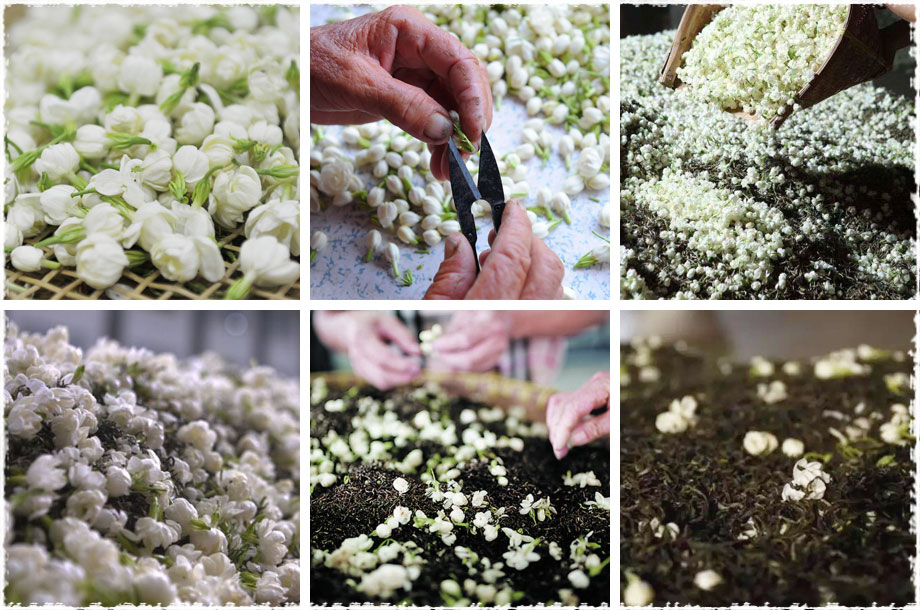
 |
Cup Method |
 |
Chinese Gongfu Method |
 |
Teacup: 12oz / 355ml |  |
Gaiwan: 3.8oz / 110ml |
 |
185℉ / 85℃ |  |
185℉ / 85℃ |
 |
1.5 Teaspoons / 2g Tea |  |
4g Tea |
 |
Brewing time: 1 - 3 mins |  |
8 steeps: rinse, 10s, 10s, 15s, 20s, 30s, 40s, 55s, 70s |
| Rinse time is around 5 seconds |
Nanling Tea Garden sits along the eastern bank of Lancang River at an average altitude of about 1500m. This garden is surrounded by rolling mountains always covered in clouds and mist, providing the perfect illumination, temperature, and moisture for tea growth - and along with this, only organic fertilizers are used, ensuring the safety and healthiness of the tea.
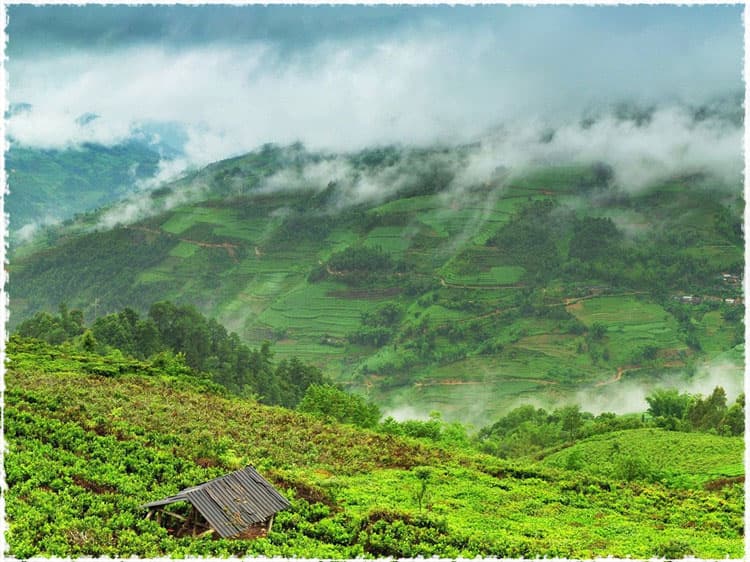
Mr. Chen is the producer of this Daughter’s Ring Nu Er Huan green tea. He has been honing his craft since he was fifteen years old, and has worked with jasmine tea specifically for over forty years. As a result it has become extremely familiar to him, and he works it in his own special style - which has become one much sought after by tea lovers.
He has told us, “Jasmine tea is one of the most complicated varieties in all of tea-making. With more scenting steps the process becomes more and more complex, and so too does the risk of ruining the tea increase… but on the contrary, more steps results in a higher grade of jasmine tea if the scenting is successful. Buds picked in spring are immediately processed and stored in the freezer until the jasmine blooms in the summer; since the blooming time and the peak of the jasmine’s aroma occurs during the night, it is vital that the scenting step is done overnight. This often makes the tea workers exhausted. The entire process is difficult, but if you love doing it, in the end the hardship is more than worth it.”
Yunnan - Green Tea
Simao is located in Puerh City, Yunnan, and has long been praised as a City of Chinese Tea. IT is also called Meng La, marking it as a place where tea culture has historically played a part. It is the beginning of the Tea Horse Road, or the southern Silk Road in history; this is a truly beautiful place, with its large mountain ranges and rivers and its pleasant climate, warm in winter and cool in summer.
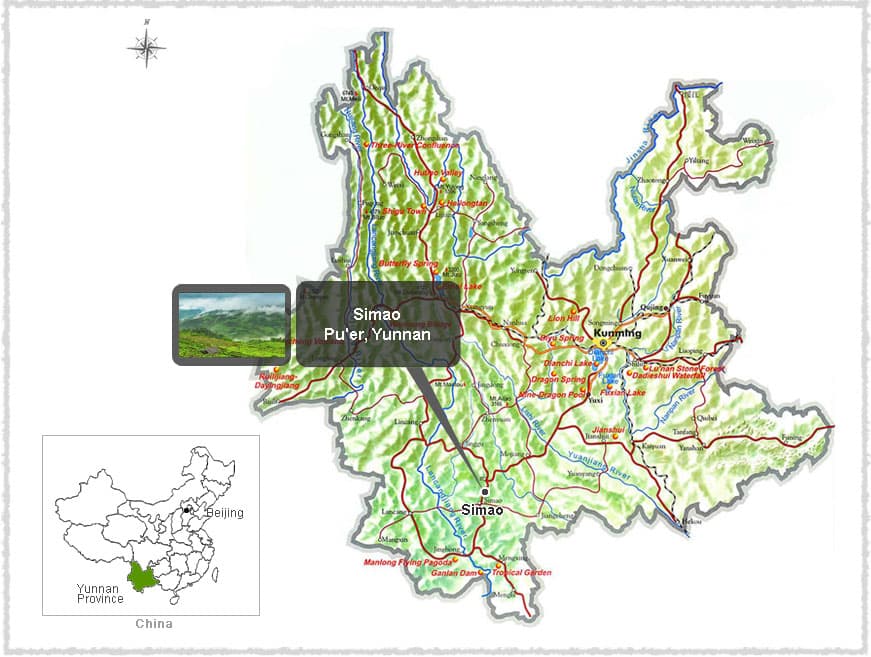
Guangxi - Jasmine Flower
The jasmine used to scent this tea originates from Guangxi, and has earned its reputation nationwide. The most notable area of production is Hengxian, known as the City of Chinese Jasmine for its ability to produce flowers of both high yield and high quality.
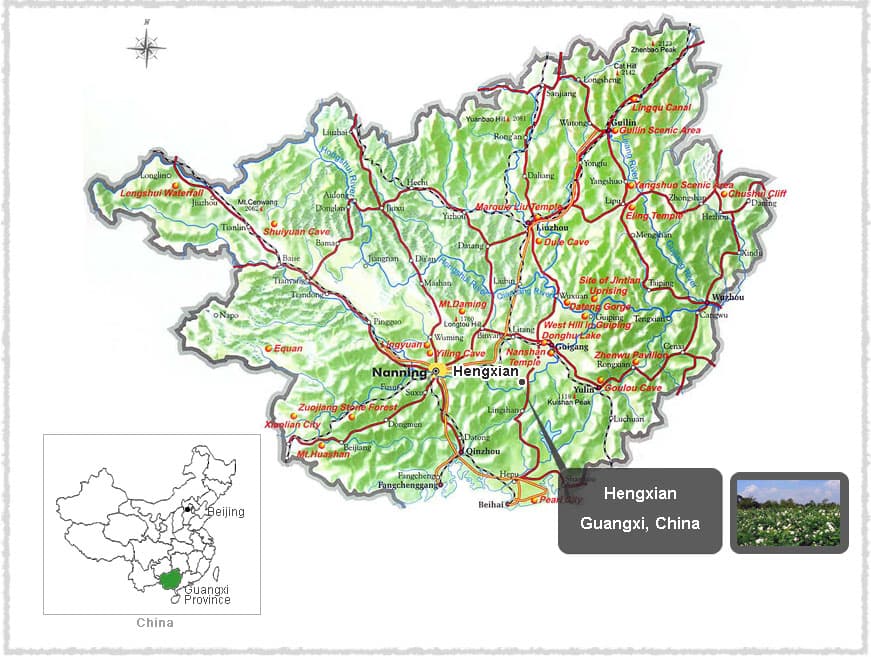
This tea is made from the Fengqing large-leaf subspecies of the Yunnan large-leaf. It propagates sexually and takes the form of an arbour tree, meaning that it can grow to over six meters tall. 1984, the Fengqing large-leaf species was certified by the Chinese government as a national grade. It contains an abundance of tea polyphenols (30.2%) and catechins (13.4%), as well as 2.9% amino acids and 3.2% caffeine.
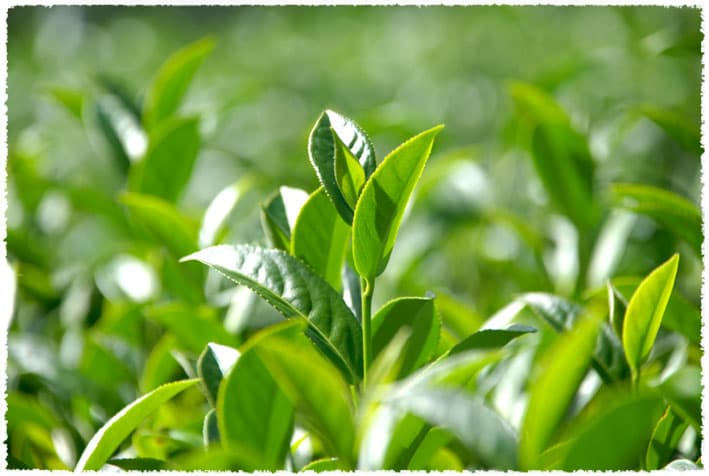
Scented green teas have a history stretching back over a thousand years, to the first innovation of adding spices and flowers to tea during the Song Dynasty around 960 AD.
During the Ming Dynasty in the 1500s, the modern method of producing jasmine-scented tea, where the flowers are added to the tea during process prior to drying, was introduced - but at this time jasmine tea was rare, due to the complexities of the processing.
In the mid-1800s during the Qing Dynasty, production methods were perfected and the number of tea farms rapidly increased, which led to greater volumes and lowered prices. This in turn led to a surge in popularity, which the tea has maintained to this day.
-
5 stars42
-
4 stars13
-
3 stars5
-
2 stars1
-
1 star0



